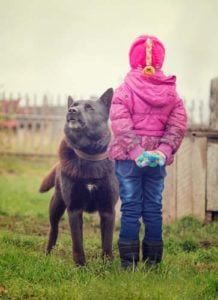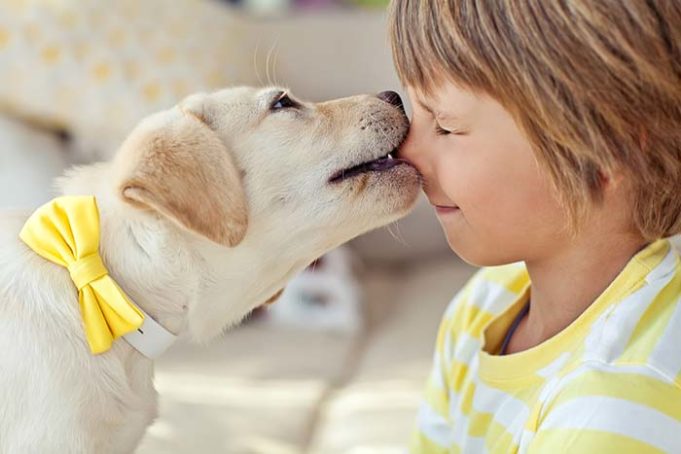Parents often invest too much trust and too little supervision into the interactions of the family dog with their children, and this can lead to dog bites and other interaction problems between kids and dogs.
Adopting a dog when you have a child is generally a great idea for many different reasons. But experts advise that teaching your child and training your dog so that the two interact well is essential for a healthy and safe relationship, and this has now been confirmed by a new study.
A VetMed University study examining the interactions of children with the family dog has found some interesting dynamics at play which are important for parents to know.
Results shows that more often than not, dog bites in children are inflicted by the family dog rather than a dog on the street. These incidents actually occur even with the presence of an adult. Here is a look at the reasons why.
ALSO READ: Kids Don’t Know Not to Approach Frightened Dogs and It’s a Problem
Kids Can Be Harassing to Dogs
 Children usually love dogs. They love petting them, playing with them, and crawling after them. Unfortunately, kids are very curious creatures, and they also love tugging at dogs’ ears and pulling on their tails. On top of all this, they like to cuddle with dogs.
Children usually love dogs. They love petting them, playing with them, and crawling after them. Unfortunately, kids are very curious creatures, and they also love tugging at dogs’ ears and pulling on their tails. On top of all this, they like to cuddle with dogs.
Children must develop the notion of empathy (feeling what someone else feels) – this is not something we are born with. Kids usually do not understand when they are inflicting pain on a pet.
If the family dog starts to feel harassed by unwanted contact with the child, they may start setting up their own boundaries by snarling, growling, snapping at or biting the child. In many cases of dog bites involving small children, the event happens as a result of apparently friendly interactions on the child’s part.
When I was a child, I tugged at my dog's ears. My mother instantly tugged my ear, and when I cried out, she said, “Well, how does that feel? Our dog feels that same pain when you do that, and if he bites you, it's your fault.” This was part 1 of my lesson.
Part 2 came a year or so later, when I went up to the brand new family dog and tried to kiss her face. The dog lightly bit my face to warn me, and then and there I learned never to do it again.
That dog went on to become my constant companion and best friend for the rest of her life.
Improper Supervision
Surprisingly, many dog bites occur despite supervision by the parents. Parents who don’t understand that the dog is harassed don’t intervene in a timely manner, and then the bite occurs right in front of their eyes.
Researchers at Vetmundi Vienna were curious as to why dog bites usually involve the family dog and oftentimes occur under adult supervision. So, they studied a survey conducted which analyzes parents’ attitudes regarding the supervision of their children with their family dog.
This research revealed that while respondents were aware of the general risk of dog bites, the majority of participants underestimated the risk involving smaller dogs.
In addition, respondents were much more concerned with their children’s interaction with unfamiliar dogs than they were with the family dog.
RELATED: The Science Behind Aggression in Dogs
Trust Trumps Intervention
Parents rated interactions with unfamiliar dogs as potentially dangerous, even when the interactions involved low risk. However, when it came to interactions with the family dog, nearly all situations were assumed to be harmless, with no need of intervention.
“People need to respect their dog's need for rest and a place of its own.” – Christine Arhant
The only situation parents rated as risky was the scenario of the child cuddling with the dog in the dog’s bed.
About half the respondents said they would allow their child to cuddle with the dog as much as they want, and would leave their child and dog unsupervised.
This is a huge source of the problem. The parents place far too much trust in the interactions of the child and the dog. They assume their child is respecting the dog, and they assume that the dog feels comfortable at all times.
This is what leads to the family dog biting the child.
The Dog Must Have Personal Space
While the survey showed that the dog owners provided for their dog’s basic needs (walks, separate feeding places, etc.), most respondents did not know that dogs require undisturbed relaxation periods away from children.
Only a few participants said that they let their dogs eat and rest out of reach of their children.
Affording your dog personal space is absolutely crucial. This means you don’t have to be constantly attentive to the child-dog interactions, and that the dog can get some time to relax. You can relax, too, knowing your dog is undisturbed and your child is safe.
Kids Can’t Recognize Signs of Stress in Dogs
Just like humans, dogs do not want to be constantly touched and followed everywhere they go. Children do not understand this, and must be trained.
Dogs can’t talk, but they do communicate to us through body language. It is the adult’s responsibility to recognize that body language and teach the child.
Signs of stress or fear in a dog are growing, body tension, drooling, yawning, hunched body posture, and frequent licking of the snout (among others).
Disturbingly, children often mistake a snarling or growing dog for a smiling dog.
The take-away: always supervise your children with your dog, afford the dog and child personal space, and educate the child on the signs of stress in dogs with a hefty warning that ignoring this will lead to a painful bite.
READ NEXT: The Ultimate Guide for Raising Kids with Dogs
Reference:
- Christine Arhant, Ricarda Landenberger, Andrea Beetz, Josef Troxler. Attitudes of caregivers to supervision of child–family dog interactions in children up to 6 years—An exploratory study. Journal of Veterinary Behavior: Clinical Applications and Research, 2016; 14: 10 DOI: 10.1016/j.jveb.2016.06.007













